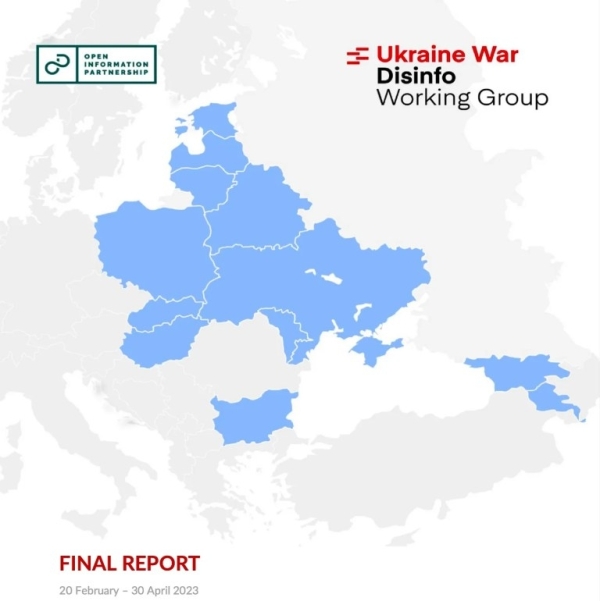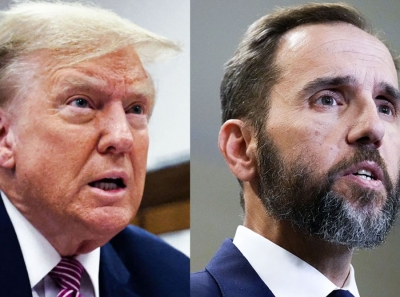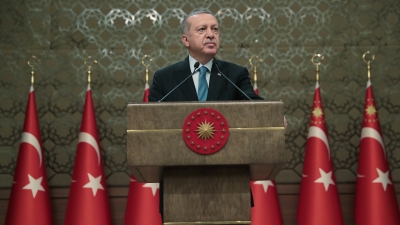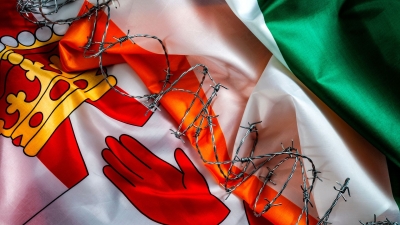Leaked documents reveal a British intel contractor singled out The Grayzone’s Max Blumenthal for online censorship, and seeks to redefine factual criticism of NATO as disinformation.
This report was originally published at Jack Poulson’s All-Source Intelligence Fusion. Subscribe here.
A leaked 130-page report made public here for the first time documents an international censorship campaign funded by the British government and led by a public relations contractor for U.S. Special Operations Forces. The basic strategy is to redefine “disinformation” to include even factual criticism of the U.S. military or the North Atlantic Treaty Organization (NATO), and then to exert “coordinated action to pressure social media and digital market actors” to “moderate” such speech. The previously secret report also recommends “intensifying cooperation among the intelligence agencies within the EU [European Union]”, which in the past has included Ukrainian intelligence conducting what it described as a “multi-level special operation” in Spain to arrest a critical journalist for treason over his YouTube broadcasts.

The international effort is coordinated by the U.K.-based government public relations contractor Zinc Network, which rose to prominence more than two years ago as the subject of the first piece of investigative journalism to be forceably labeled by Twitter as potentially obtained through hacking. Despite being based upon documents implicitly confirmed as authentic, the reporting was arguably panned by major U.S. outlets because of the embarrassing ties it revealed between Western intelligence agencies and prominent investigative journalism.
Based upon a fresh leak of a report internally released by the Ukraine War Disinfo Working Group of Zinc’s Open Information Partnership (OIP) earlier this month, the author is independently concluding that the U.K. government-funded network of think tanks and investigative journalists has recommended a coordinated campaign to pressure social media companies and “digital market actors” into suppressing even factual criticism of NATO-aligned governments.
We are further revealing from public procurement records that Zinc Network received more than $500,000 from a direct contract with U.S. Special Operations Command in Kenya and more than $3 million from a subcontract with U.S. Army Europe and Africa under the controversial U.S. intelligence contractor CACI. (Last month a federal judge again refused to dismiss a lawsuit against CACI regarding its alleged support for U.S. military torture in the Abu Ghraib prison.)
Much of the polarization surrounding The Grayzone’s reporting centered on OIP’s previous partnership with the influential investigatory nonprofit Bellingcat, whom Zinc funded with more than 65,000 euros between 2019 and 2021. Grayzone’s 2021 publication noted that one of the potential Bellingcat trainers named in Zinc’s documents was Christiaan Triebert, who subsequently moved to the Visual Investigations team of The New York Times. Bellingcat’s former director of training and research, Aric Toler, recently joined the same team.
Zinc Network and Bellingcat did not respond to detailed requests for comment sent two days before publication. Additional emails to the two official public accounts associated with OIP bounced due to the author’s email address not being on a pre-approved list, but both Zinc and its OIP team confirmed receipt directly before the requested response deadline. This article will be updated if any of the organizations provide a post-publication comment.
The former head of the U.S. Department of Homeland Security’s short-lived Disinformation Governance Board, Nina Jankowicz, has also prominently advertised their role as a member of OIP’s advisory board. Much of the concern surrounding such a content moderation board within DHS stemmed from fears that it could become a tool for suppressing even factual critiques of the U.S. Government — an overt aim of the newly public OIP report.

The Ukraine War Disinfo Working Group’s study was largely outsourced by Zinc to eleven separate organizations: the Ukrainian narrative surveillance firm LetsData led the social media data collection and network analysis, while each of the ten Eastern European regions of study was handled by a separate think tank. For example, analysis of Ukraine was assigned to Detector Media, whose 2020 annual report listed the U.S. Embassy in Ukraine, the U.S. Agency for International Development, OIP, and the Ministry of Foreign Affairs of Denmark as funders.
The number one target of Detector’s campaign in Ukraine, journalist and politician Anatoliy Shariy, has been twice charged with treason by the Security Service of Ukraine (SBU). The first charge, for posting a map of Ukraine to his YouTube channel which excluded Crimea and the Donbas, resulted in his brief arrest in Spain as a result of what the SBU itself described as a “multi-level special operation”. The second charge was announced in July through the SBU’s Telegram channel, based on an accusation that Shariy provided filming advice to Russian intelligence.

Leaked emails from the Twitter Files revealed that the U.S. Federal Bureau of Investigation (FBI) forwarded requests from the SBU to Twitter which included a demand to censor both Shariy and Canadian journalist Aaron Maté. Maté is perhaps the second most prominent contributor to The Grayzone behind founding editor Max Blumenthal, whom OIP names alongside Columbia professor Jeffrey Sachs as an influential American figure in “pro-Russian” narratives in Belarus. The SBU’s request for Twitter to censor Shariy and Maté came one year after Grayzone’s exposé of Zinc’s Open Information Partnership.
The OIP working group’s recent recommendation of “coordinated action to pressure social media and digital market actors” to censor even factual journalism is laid out in the leaked final report. The first page of its introduction defines disinformation to include even verifiable criticisms of NATO, with two such explicit categories including “Content based on verifiable information which…uses emotive or inflammatory language” and “Not-attributable…information which fits with existing pro-Kremlin narratives, aims or activities”. Under a non-partisan extension of this system, the U.S. Congressman-endorsed online troll army known as the North Atlantic Fella Organization (NAFO) would have its communications labeled as disinformation, regardless of the veracity of its individual arguments. But OIP’s targets are instead influential journalists who report critically on NATO.
The basic methodology of the report was to collect 50 postings each week using keyword searches on individually selected “pro-Russian” information sources in each of the ten studied regions, typically taking 35 of the 50 posts from social media such as Telegram and Facebook and 15 from online media outlets. U.S. Army Cyber Command has similarly been purchasing bulk copies of the public content of social media platforms such as Facebook and Twitter as part of its mission to protect the “NATO brand”, as was revealed by the author in April.
(Twelve pages of the Ukraine War Disinfo Working Group’s final report were made public six days ago on LinkedIn by the Lithuanian non-profit Civic Resilience Initiative (CIR), which handled the Baltics region for the group. Several weekly reports from OIP’s study were also published by Political Capital, the Hungarian think tank tasked with monitoring narratives in its own country. While of a similar format, the weekly reports do not contain, for example, the final report’s noteworthy recommendation of a coordinated pressure campaign against social media companies and “digital market actors”. CIR’s twelve pages similarly are focused on the Baltics and do not contain the full report’s more controversial definitions or recommendations.)

The leaked U.K. government-funded report explicitly warns against usage of the phrase “the West”, arguing that “This may fuel the narrative that the so-called ‘collective West’ exerts undue control over Ukraine.” On the other hand, the final pages of the report argue that “intelligence agencies across Europe can and should do more and they require a more unified approach [emphasis theirs]”. The group further recommends “Improving and intensifying cooperation among the intelligence agencies within the EU with the focus on malign foreign information influence.”

























